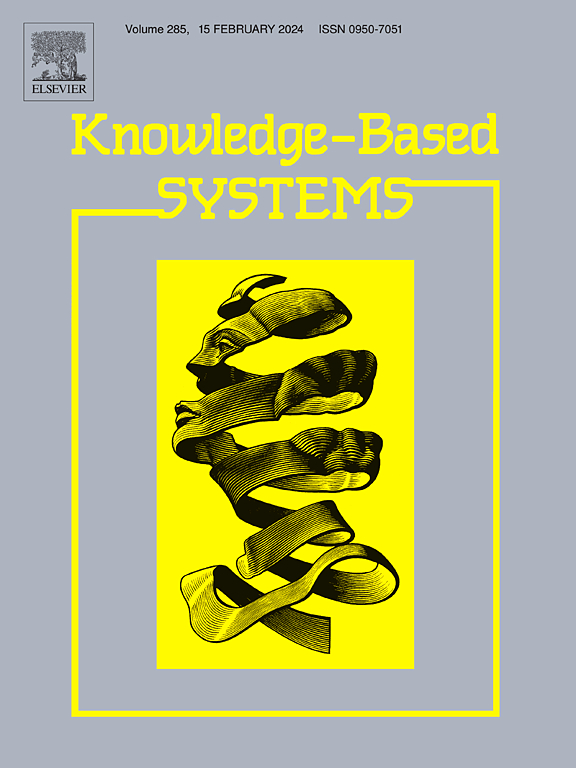Dual-decoding branch contrastive augmentation for image manipulation localization
IF 7.6
1区 计算机科学
Q1 COMPUTER SCIENCE, ARTIFICIAL INTELLIGENCE
引用次数: 0
Abstract
With the rapid development of image editing techniques, forensic analysis to detect malicious image manipulation has become an important research topic. The current image manipulation detection and localization methods can accommodate diverse forms of tampering. However, their approach to handling various tampering detection types is limited to a uniform regression pathway. This approach fails to recognize the unique characteristics of copy-move tampering, which is significantly different from other tampering types. Employing a generic detection methodology indiscriminately poses the risk of confusing the training regression trajectory of the deep learning models. To mitigate this challenge, this paper introduces a novel framework featuring a dual-decoding branch structure specifically designed to augment features pertinent to copy-move tampering types. Moreover, it facilitates the detection of tampered regions, irrespective of the tampering type, within the main branch. To achieve this goal, we first introduce a contrastive augmentation module in the encoder, which maximizes the feature space distance between the manipulation regions and pristine regions. Next, we design a parallel attention module to extract more diverse multiscale features. Moreover, we introduce a constrained shifted-window dual attention module to extract tampering noise features. In the decoder, we design a dual-decoding branch to capture both the homologous and tampering features, and we employ contrastive learning to minimize the feature space distance of the homologous regions for copy-move manipulation detection. Finally, we design a category normalization loss function to balance the model’s attention across each category. Extensive experiments demonstrate that the proposed approach achieves state-of-the-art performance on various benchmark datasets.
双解码分支对比增强图像处理定位
随着图像编辑技术的快速发展,检测恶意图像篡改的法医分析已成为一个重要的研究课题。目前的图像处理检测和定位方法可以适应各种形式的篡改。然而,他们处理各种篡改检测类型的方法仅限于统一的回归路径。这种方法无法识别复制-移动篡改的独特特征,这与其他篡改类型有很大的不同。不加区分地使用通用检测方法有混淆深度学习模型的训练回归轨迹的风险。为了缓解这一挑战,本文引入了一个具有双解码分支结构的新框架,专门设计用于增强与复制-移动篡改类型相关的功能。此外,它便于检测主分支内的篡改区域,而不管篡改类型如何。为了实现这一目标,我们首先在编码器中引入对比增强模块,使操作区域与原始区域之间的特征空间距离最大化。接下来,我们设计了一个并行关注模块来提取更多样化的多尺度特征。此外,我们还引入了约束移窗双注意模块来提取篡改噪声特征。在解码器中,我们设计了一个双解码分支来捕获同源和篡改特征,并采用对比学习最小化同源区域的特征空间距离来进行复制移动操作检测。最后,我们设计了一个类别归一化损失函数来平衡模型在每个类别上的注意力。大量的实验表明,所提出的方法在各种基准数据集上达到了最先进的性能。
本文章由计算机程序翻译,如有差异,请以英文原文为准。
求助全文
约1分钟内获得全文
求助全文
来源期刊

Knowledge-Based Systems
工程技术-计算机:人工智能
CiteScore
14.80
自引率
12.50%
发文量
1245
审稿时长
7.8 months
期刊介绍:
Knowledge-Based Systems, an international and interdisciplinary journal in artificial intelligence, publishes original, innovative, and creative research results in the field. It focuses on knowledge-based and other artificial intelligence techniques-based systems. The journal aims to support human prediction and decision-making through data science and computation techniques, provide a balanced coverage of theory and practical study, and encourage the development and implementation of knowledge-based intelligence models, methods, systems, and software tools. Applications in business, government, education, engineering, and healthcare are emphasized.
 求助内容:
求助内容: 应助结果提醒方式:
应助结果提醒方式:


